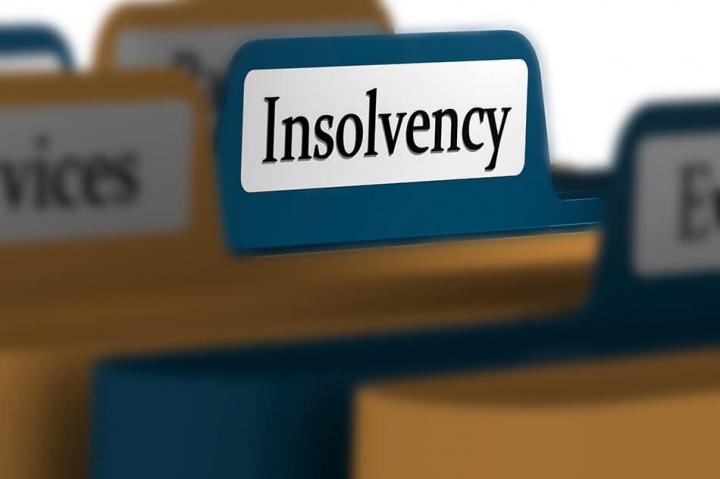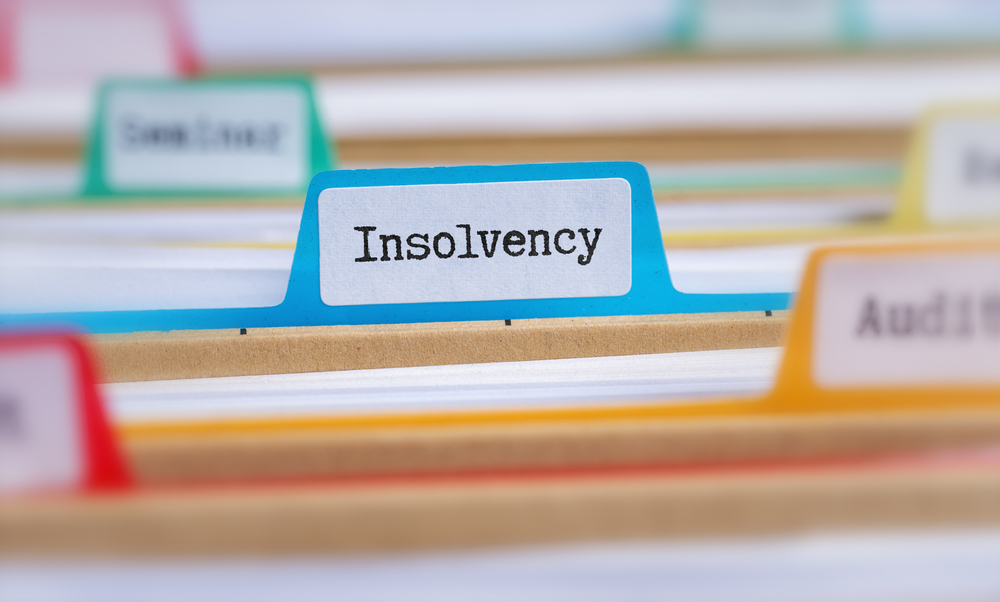
What to do about Customer or Client Insolvency?
When a key client faces financial problems, it’s essential to understand what this could mean for your business.
Insolvency can happen when a company cannot pay its debts as they fall due or when its liabilities exceed its assets. Either way, it could mean you don’t get paid what you’re owed.
To protect your interests, it’s worth familiarising yourself with the UK’s insolvency procedures. These processes are designed to either rescue a struggling company or wind it up in an orderly fashion and include:
- Administration: Aims to rescue the company or achieve a better result for creditors than immediate liquidation.
- Liquidation: Involves selling the company’s assets to repay creditors.
- Company Voluntary Arrangement (CVA): A formal agreement between a company and its creditors to repay debts over time.
Your position as a creditor and the likelihood of recovering your debt will depend on various factors, including the specific insolvency procedure and your ranking in the creditor hierarchy. Secured creditors have priority over unsecured creditors in recovering their debts.
In the following sections, I’ll outline some practical steps to protect your business in such situations.
>>You might be interested in our article on creditors rights in liquidation
- Early Warning Signs of Customer Financial Distress
- Essential Steps for Handling Client Insolvency
- Gather Information
- Contact the Insolvency Practitioners
- Review Your Contracts
- Secure Any Assets
- File Proof of Debt
- Mitigate the Business Impact
- Are you Experiencing Cash-flow Problems Thanks to Insolvent Customers?
- Frequently Asked Questions about Client Insolvency
Early Warning Signs of Customer Financial Distress
It’s natural to worry about your customers’ financial stability. After all, losing a source of income could trigger your own cash-flow problems. While diligent credit checks are important, they cannot always predict insolvency.
To help mitigate risks, it’s worth being aware of potential warning signs that a customer might be approaching a tipping point. These include:
- Erratic payment behaviour: Watch for clients who alternate between paying early (potentially to maintain credit lines) and very late. This inconsistency often indicates cash flow juggling.
- Requests for extended credit terms: A sudden push for longer payment periods often suggests liquidity issues.
- Changes in communication patterns: A sudden increase in terse responses or difficulty reaching key financial contacts can signal internal disarray.
- Unusual requests for documentation: If a client repeatedly asks for duplicate invoices or statements, they may be preparing for refinancing or facing pressure from creditors.
- Subtle changes in order composition: A shift towards lower-margin products or services, or frequent small orders instead of larger ones, may indicate attempts to manage cash flow.
- Increased use of third-party financing: If a previously self-financing client suddenly starts using invoice factoring or supply chain finance, it could suggest liquidity issues.
You should also stay informed about your client’s industry and market conditions. Negative press, loss of key contracts, or industry-wide challenges can all contribute to a company’s financial distress.
Essential Steps for Handling Client Insolvency
If the worst happens and your client becomes insolvent, all is not lost. By acting decisively, you’re likely to have a better chance to mitigate the knock-on effects on your own business.
Firstly, stop supplying goods or services to the insolvent client unless you have explicit assurances from the appointed insolvency practitioner. Then take the following steps:
Gather Information
Start by reviewing all your records related to the insolvent client. This includes:
- Contracts and agreements
- Outstanding invoices and payment records
- Correspondence, particularly any recent communications about financial difficulties
- Proof of any goods or services delivered but not yet paid for
Next, try to understand the nature of the insolvency. Is the company in administration, liquidation, or undergoing a Company Voluntary Arrangement? Each of these processes has different implications for creditors like yourself.
Finally, familiarise yourself with the insolvency timeline. When are creditors’ meetings scheduled? What are the deadlines for submitting claims? Understanding these key dates will help you plan your next moves effectively.
Contact the Insolvency Practitioners
Establishing clear and prompt communication with the appointed insolvency practitioners is crucial. These professionals are responsible for managing the insolvency process and will be your primary point of contact throughout.
When you reach out to the insolvency practitioners:
- Introduce yourself and your company, clearly stating your relationship with the insolvent business.
- Provide details of any outstanding debts owed to you.
- Ask for confirmation of the specific insolvency process and any immediate steps you need to take.
- Enquire about the timeline for the insolvency proceedings and key dates for creditors.
It’s important to maintain professional and courteous communication. While you may feel frustrated or concerned, remember that insolvency practitioners are bound by legal obligations and must treat all creditors fairly.
Be prepared to provide any documentation the insolvency practitioners request. This might include proof of debt, contracts, or correspondence.
You should also ask how to stay informed about the proceedings. Many insolvency practitioners send regular updates via email or through a dedicated creditors’ portal.
Review Your Contracts
Start by examining your terms and conditions, paying particular attention to:
- Retention of title clauses: These may allow you to reclaim unpaid goods.
- Termination clauses: Check if you have the right to terminate the contract due to insolvency.
- Payment terms: Review any credit arrangements or payment schedules.
- Set-off rights: Determine if you can offset any debts you owe against what you’re owed.
It’s also important to review any personal guarantees or security you might hold. These could significantly improve your position as a creditor.
Be aware that some contractual rights may be affected by the insolvency process. For instance, administration proceedings often impose a moratorium on creditor actions, which could limit your ability to enforce certain contractual rights.
Secure Any Assets
If you’ve supplied goods to the insolvent client that haven’t been paid for, you may be able to reclaim them. This is where the concept of ‘retention of title’ becomes crucial.
Firstly, check your contracts for a retention of title clause. This clause typically states that ownership of goods doesn’t pass to the buyer until they’ve been paid for in full. If you have such a clause, you may have the right to reclaim your goods.
Next, take these steps:
- Locate the goods: Try to confirm if the goods are still in the possession of the insolvent company.
- Notify the insolvency practitioner: Inform them of your retention of title claim as soon as possible.
- Provide evidence: Be prepared to supply contracts, invoices, and delivery notes to support your claim.
Be aware that enforcing a retention of title claim can be complex. The goods must be identifiable and not have been incorporated into other products. If you’re unsure, seek legal advice promptly.
Even if you can’t reclaim goods, documenting your attempts can be valuable. It may strengthen your position as a creditor in the insolvency proceedings.
File Proof of Debt
Filing your claim correctly and promptly is crucial in maximising your chances of recovery. This process, known as ‘proving your debt’, formally registers your claim in the insolvency proceedings.
When you receive the proof of debt form from the insolvency practitioner:
- Provide supporting evidence: Attach copies of invoices, contracts, and any relevant correspondence.
- Calculate interest: If applicable, include any interest due on the debt up to the date of insolvency.
- Submit on time: Adhere strictly to the deadline provided by the insolvency practitioner.
If you’re unsure about any aspect of your claim, seek guidance from the insolvency practitioner or consider getting professional advice. Errors or omissions could delay the process or potentially reduce your recovery.
Remember, filing a claim doesn’t guarantee full repayment. The amount you receive will depend on various factors, including the type of insolvency process, the company’s assets, and your ranking in the creditor hierarchy.
Mitigate the Business Impact
When a major client becomes insolvent, the impact on your own cash flow and operations could be significant, so you need to plan accordingly.
- Start by assessing the financial impact. Calculate the total loss, including unpaid invoices and future contracted work. Review your cash flow projections and adjust them to account for the loss. Identify any immediate financial pressures, such as upcoming payments to suppliers or staff wages.
- Next, consider your operational response. Reallocate resources that were dedicated to the insolvent client. Review your client portfolio to identify opportunities to increase work with other clients. You might also need to accelerate business development efforts to replace lost revenue.
- It’s also important to communicate effectively with your stakeholders. Brief your staff on the situation and any potential impacts on the business. If necessary, speak to your bank or investors about short-term financial support. You should also reassure other clients if there’s any risk of the insolvency affecting your service to them.
Are you Experiencing Cash-flow Problems Thanks to Insolvent Customers?
Call our directors’ helpline on 0800 074 6757 for the free debt assistance you need. Alternatively, for immediate assistance, use the orange live chat button on the lower right-hand side.
Frequently Asked Questions about Client Insolvency
How quickly can I expect to recover my debt in a client insolvency situation?
The timeline for debt recovery varies significantly depending on the insolvency process and the company’s assets. In a straightforward liquidation, you might receive initial payments within 6-12 months, but full recovery can take years. In complex administrations, the process may be even longer. It’s crucial to file your claim promptly to ensure you’re included in any distributions.
What’s the difference between my rights as a creditor in administration versus liquidation?
In administration, there’s often a moratorium on creditor actions, and the focus is on rescuing the business. You may need to continue supplying goods or services if deemed essential. In liquidation, the company is being wound up, and the focus is on realising assets for distribution to creditors. Your rights to take independent action are generally more limited in administration.
What should I do if I suspect a client is about to become insolvent?
If you suspect imminent insolvency, review your exposure immediately. Gather all relevant documentation, assess any unpaid goods or services, and consider ceasing further supply. Monitor the client closely for formal insolvency notifications. Consider seeking legal advice to understand your options, which might include statutory demands or winding-up petitions in severe cases.








